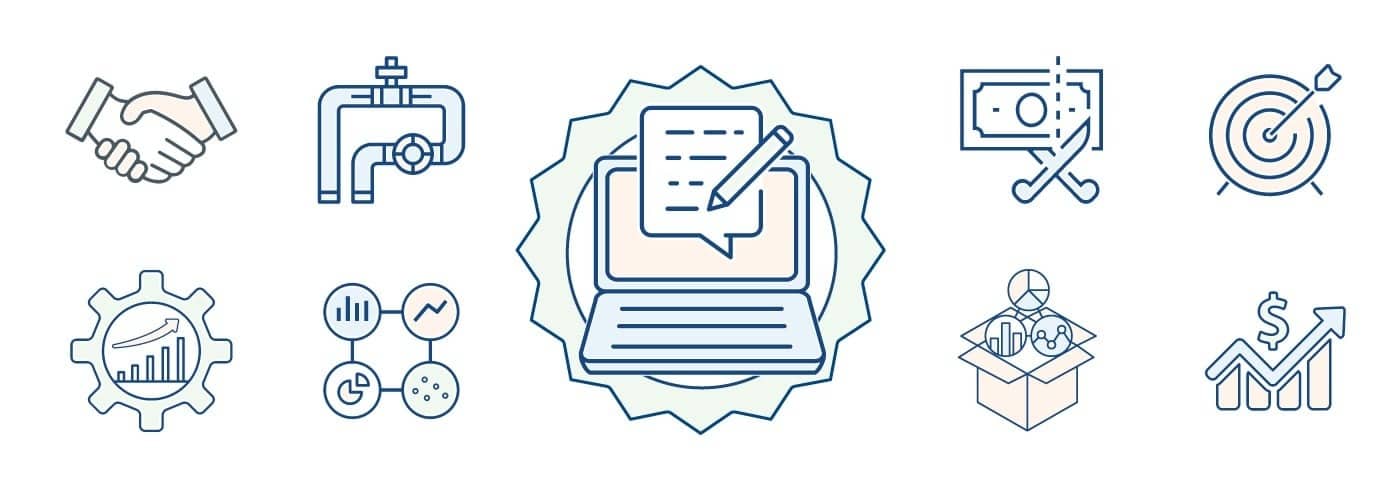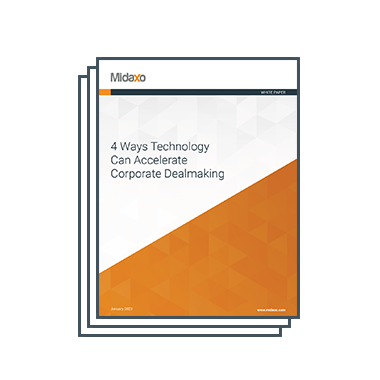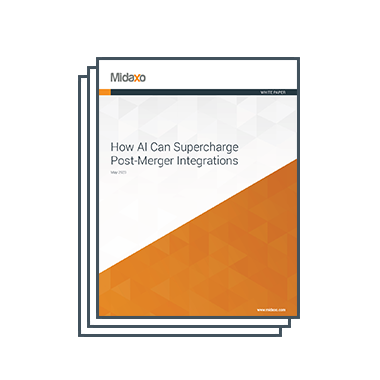In the mergers and acquisitions landscape there is very little margin for error, which could explain why more deals fail than meet or exceed goals. The number of factors contributing to failed acquisitions is certainly a long list, and applies to every stage of the process, from M&A pipeline management through post-merger integration.
This post focuses on one crucial step within M&A, where organizations either identify the strategic alignment they hoped for or realize their initial analysis overshot: due diligence.
At Midaxo we feel one of the major gaps in traditional due diligence is the lack of modern technology. Companies are using Excel, E-Mail, and VDRs, but are these tools making teams more efficient in their deal review?
Successful acquirers enter the M&A due diligence process with a strong, well-articulated deal thesis, typically answering the question: “How will buying this business make my existing business more valuable?” From there, teams request key information from sellers, review documents, flag issues/risks, and ultimately answer their hypothesis to generate a price for purchase, or abandon the deal.
Technology involved in running a diligence – ideally, purpose-built M&A software – should address those areas and make teams more efficient. How can a third-party platform or application actually make this happen? Here’s an overview.
A Standardized Process
The ability to approach each effort with a proven due diligence playbook is crucial to evaluating and answering the deal value thesis. The technology used must have the ability to create repeatable templates, which could include: known risks/deal breakers to look for, industry-specific documents, functional groups that need to be involved, etc.
Each time a due diligence is run, a successful acquisition team will look at their process to identify areas of improvement, and due diligence technology helps to support continuous improvement.
Centralized Issue Tracking
As teams dig into documents and look for various areas of risk with a potential purchase, they flag and identify findings that could affect the deal thesis. Technology is crucial to this step in the diligence process, because it allows for the big picture view of everything identified.
Too often each individual team operates in a silo as they uncover their findings, which could result in a huge missed issue affecting deal success. The tools you use to track flagged issues must enable transparency and visibility, so your acquisition team can either kill deals faster or move forward faster, based on what is being uncovered.
Communicating Seamlessly
The number of team members involved in this stage of the M&A process can be massive, and it usually involves functional heads who have other full-time jobs. Traditional diligence tools do not allow for communication to occur in a relevant space. Emails sent that refer to documents stored offline or uploaded into a black hole data room make for a chaotic due diligence.
M&A software enters here to provide easy cross-team communication, where each team can easily refer to documents or any part of the process. Help your teams communicate more effectively with technology that allows for true collaboration in due diligence.
Watch our webinar on Watch our webinar on how buy-side due diligence software improves your process.
Collaborating & Creating Enterprise Value
Current tools used by acquisition teams to execute due diligence exist in a silo, which contributes to a silo’d view of the M&A process. The right technology allows teams to make their contributions to the due diligence, and give visibility of their findings to other workstreams, project members, and integration teams. This is where the right technology helps encourage collaboration across M&A stages, which makes you a more successful acquirer, and organization in turn.
The systems used to execute a due diligence within M&A should help teams become more effective, expedite value creation, and prove/disprove the deal thesis quicker. Having purpose-built technology will give teams the mechanism needed to operate more efficiently, identify synergies more quickly, and establish their due diligence process as a competitive advantage in and of itself.
So ask yourself, does the technology you use in due diligence make your team more effective?





